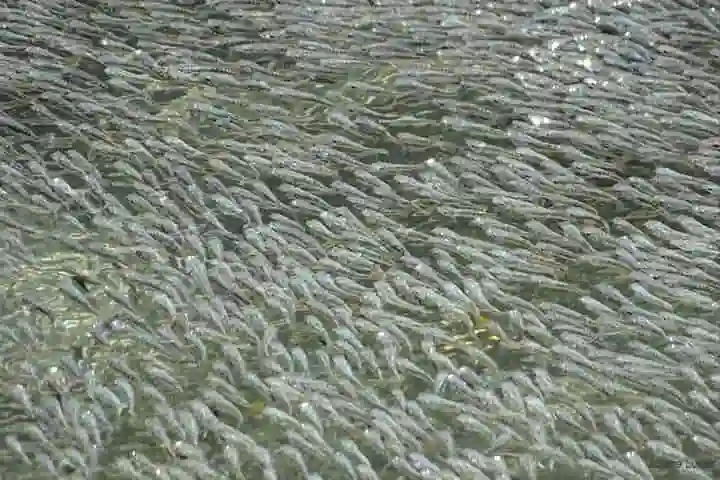Nature never ceases to surprise us. Take the case of a freshwater fish which is small and called sulphur mollies who come together to create a wave just like the avid spectators do in a sports arena. The difference in their wave is that this action created in unison by hundreds of thousands of these fish guards them against predatory birds.
According to an article in sciencedaily.com, this was reported by scientists in Current Biology.
Sharing how this action of the sulphur mollies amazed them, Jens Krause of the Leibniz Institute of Freshwater Ecology and Inland Fisheries in Berlin and Cluster of Excellence Science of Intelligence said: "The surprises came once we realized how many fish can act together in such repeated waves. There are up to 4,000 fish per square meter and sometimes hundreds of thousands of fish participate in a single fish wave. Fish can repeat these waves for up to two minutes, with one wave approximately every three to four seconds."
You can watch this collective wave action by the sulphur mollies below, as they evade an avian predator pic.twitter.com/nN4EyfosAE
— Cell Press (@CellPressNews) December 22, 2021
One can’t miss this behaviour of this unusual fish, found in sulphuric springs that are poisonous for most other fish. The reason being, they do the same thing, even when a human being is close to them.
In the beginning, the scientists were amazed at this act including David Bierbach, whose is the co-author of the study along with Carolina Doran and Juliane Lukas of the Leibniz Institute of Freshwater Ecology and Inland Fisheries and Cluster of Excellence Science of Intelligence.
"At first we didn't quite understand what the fish were actually doing. Once we realized that these are waves, we were wondering what their function might be,” said Bierbach.
Also read: New study shows number of fish rises rapidly in waters where pollution is reduced
For the scientists the action of the fish evoked the scenes witnessed at football stadiums where La-Ola or Mexican waves took place. Observing the presence of several fish-eating bird species in the vicinity of the river gave the researchers the clue that this waving behaviour by fish may actually be some kind of defence.
This made them decide to probe how the wave action leads to anti-predatory benefits. Through their research they realised that the engagement of the fish in surface waves was highly conspicuous, rhythmic and repetitive. It was also found through experimentally induced fish waves that the time the prey birds waited until their next attack doubled. This cut down the frequency of the attack.
The study supported that the fish waves did indeed help in anti-predatory function. The collective behaviour caused lessening of risk of animal’s predation. Moreover, the study has serious implications about animals’ collective behaviour.
Also read: Why do swarms of sardines swim to their death in the warm waters of the Indian Ocean?
Airing his views about the study Krause said: "So far scientists have primarily explained how collective patterns arise from the interactions of individuals but it was unclear why animals produce these patterns in the first place. Our study shows that some collective behaviour patterns can be very effective in providing anti-predator protection."
What comes across from the study is that waving by the fish brings down the chances of successful attack by birds but what is not known yet is why that is. Is that the waves confuse birds or that it indicates to them that they have been observed and that the chances of their success are less? It is these areas of study that scientists want to study in future.




















